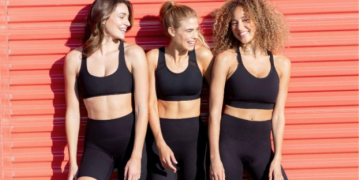Skin cancer is one of the most common forms of cancer globally. More than 2 million cases of non-melanoma skin cancer and around 130,000 melanoma skin cancers develop in people across the globe each year. This is a 1:3 ratio versus other types of diagnosed cancer.
And what causes skin cancer?
Many causes are associated with skin cancer but the primary factor is exposure to UV light, which explains why most people wear a UV safe shoulder wrap when going out under the sun.
Shoulder wraps, much like other sun-protective clothing, block ultraviolet radiation and the harmful effects that come with it. Thus, by wearing it, you protect yourself from skin cancer.
The question now is, how can you be sure that what you’re wearing is effective in absorbing or blocking.
UV rays?
Look for the UPF label.
Ultraviolet Protection Factor or UPF tells how much UV rays can get through a piece of fabric and reach your skin. Sun protective clothing usually has this label – something you need to check so you know how protected you are from UV radiation.
So, if a UV shoulder wrap has a UPF 50 label, it means only 1/50 or 2% of the sun’s rays can get to your skin, protecting you from 98%.
Be aware of the material used.
Knowing what materials compose your UV sleeves is crucial in determining how much they can protect you from ultraviolet light. It is important to understand the fabrics that can naturally absorb UV rays, such as unbleached cotton. Moreover, some materials can reflect radiation while others are treated with chemicals to make them block the sun’s rays.
See if the fabric is densely-woven.
Densely-woven fabric is more protective against UV rays compared to loosely-woven materials. This makes denim, canvas and wool better than thin or sheer fabric when going outdoors. But for UV sleeves, synthetic fibres like Meryl Microfiber are some of the best materials you can find. This fabric is excellent at blocking UV light no matter what activity you engage in.
If you want to know if your shoulder sleeves are densely-woven, hold them up against the light. When you can see through them, UV light can also pass through.
Choose black or bright colours.
Dark colours are known to block UV rays, making them the best option when looking for sun protective clothing. This goes the same for bright colours. Such colours keep the sun’s rays from reaching your skin by absorbing them, thereby protecting you from skin cancer and other harmful UV effects.
Don’t go for tight-fitting clothes.
If your sun protective clothing is fit or tight, chances are it will stretch and allow UV light to penetrate and reach your skin. Thus, the right fit or loose clothing is better if you want more protection from the sun.
The ozone hole was revealed to be increasing and has reached its largest size this year – almost the size of North America. This increases the amount of UV light entering the Earth’s surface. Unfortunately, the ozone layer is not expected to make a full recovery until 2050.
So, the best thing is to protect yourself by wearing sun-protective clothing, such as UV sleeves, especially when exposed to the sun. With the right sun-safe apparel, you can enjoy the outdoors and stay protected even under the sun. And when you do, make sure to remember the tips above.
















